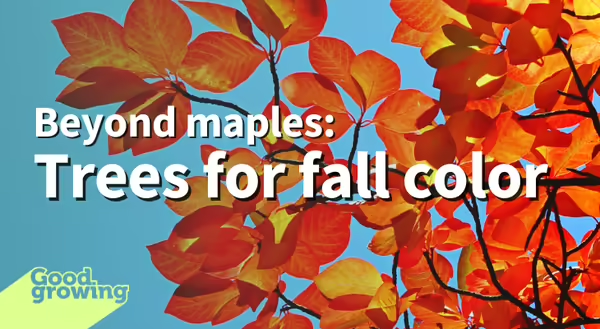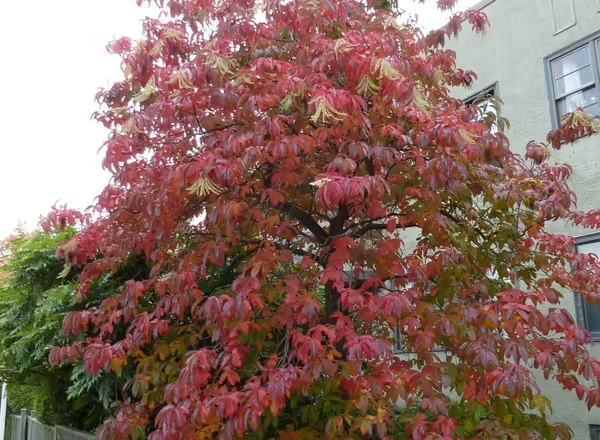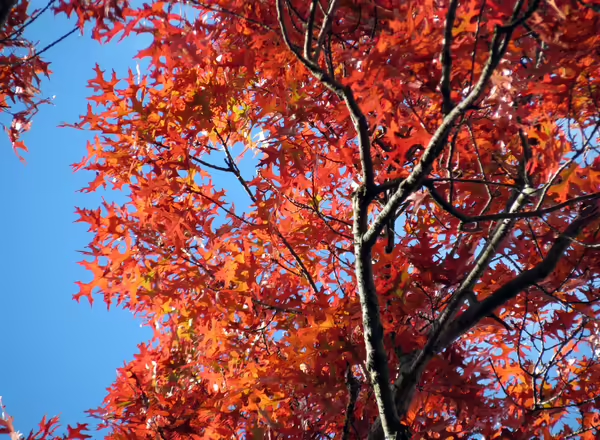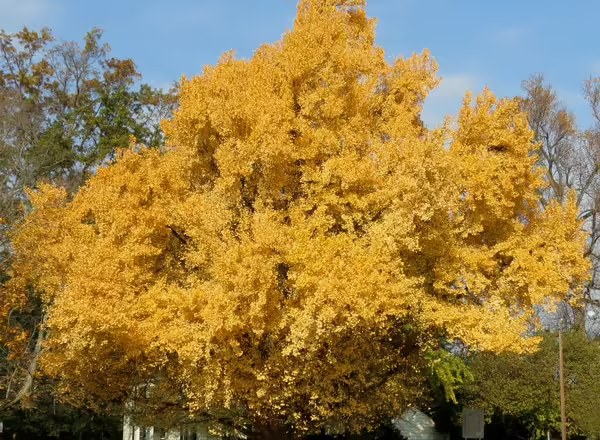
With the arrival of cooler temperatures and shorter days, plants have begun the process of preparing themselves for the coming winter. One of the most notable ways this happens is the changing colors of our trees. From yellows, golds, oranges, reds, and purples, our landscapes will soon be, or perhaps already are, awash in colorful foliage.
Maples are often our go-to tree when it comes to fall color, and for good reason. From black, red, and sugar, maples produce some of the most spectacular fall color displays. However, because of their popularity, maples have been over-planted in many areas. Not having a diverse tree community can have a devastating impact on our landscapes. Just look at what Dutch elm disease and emerald ash borer have done in many areas of the country.
Fortunately, maples aren't the only tree species that can provide colorful foliage in our fall landscapes.
Trees with good fall color

Black tupelo (Nyssa sylvatica), also known as black gum, is a native medium-sized tree that grows to be 30-50 feet tall and 20-30 feet wide. These trees produce attractive foliage in both the summer and fall. In the summer, leaves are dark green and glossy and will become a stunning yellow to orange to red in the fall. They do best in moist, well-drained, acidic soils but can tolerate drier conditions. The small, dark-blue fruit is attractive to birds.

Sweetgum (Liquidambar styraciflua) is a large native tree, growing 50-60 feet tall and 40-50 feet wide. Trees produce star-shaped leaves, and their fall color can vary from yellow to orange, red, and purple. In addition to their good fall color, these trees are relatively fast-growing and tolerate a wide range of soil conditions. However, many people have a love-hate (usually hate) relationship with them due to their fruit, a spiny ball that is 1 inch in diameter. Some cultivars produce less or no fruit, but some, like 'Rotundiloba', are not reliably winter hardy in much of Illinois.

Sassafras (Sassafras albidum) is a native species often found in natural areas but not commonly found in cultivated landscapes. They can grow 30-60 feet tall and 35-40 feet wide. Trees will produce three differently shaped leaves (entire, mitten-shaped, and three-lobed) that will turn yellow to orange, red, and purple. Trees will often sucker and form thickets. Plants will produce an attractive spicy smell when bruised or scratched.

Sourwood (Oxydendrum arboreum) is native to the eastern U.S. and can grow 20-50 feet tall (usually on shorter range in landscapes) and 10-25 feet wide. They have yellow to red to maroon fall color. In addition to great fall colors, trees produce small, long-lasting, fragrant flowers in the spring. Trees grow best in well-drained, acidic soils.

Oaks (Quercus spp.) are often overlooked when it comes to fall color. However, many oaks like white (Q. alba), swamp white (Q. bicolor), northern red (Q. rubra), pin (Q. palustris), black (Q. velutina), and Shumard (Q. shumardii) can have good fall colors, although they can be inconsistent. Scarlet oak (Q. coccinea) can also produce a dazzling fall display of scarlet to red-purple leaves. It is one of the last oaks to develop fall colors, but color can also be inconsistent like other oaks.

Ginkgo (Ginkgo biloba) is considered a 'living fossil'; the species has existed for over 200 million years. They are native to China and can grow 50-80 feet tall and 30-40 feet wide. They produce unique fan-shaped leaves that turn yellow to gold in the fall. The leaves often drop within a few days after a hard freeze, making clean-up easy. Plants are male or female (dioecious), and the male trees are more desirable because the females produce a smelly 'fruit' (not actually fruit since they are gymnosperms, not angiosperms).
Good Growing Fact of the Week: Fall leaf color intensity can vary from year to year, often due to the weather. Adequate soil moisture throughout the growing season, along with warm, sunny days and cool (not freezing) nights in the fall, is the ideal recipe for a colorful fall.
Resources and more information
Dirr, Michael, and Keith S Warren. 2019. The Tree Book: Superior Selections for Landscapes, Streetscapes, and Gardens. Portland, Oregon: Timber Press.
Steil, Aaron. 2023. Trees and Shrubs with Great Fall Color. Horticulture and Home Pest News. Iowa State University Extension and Outreach. October 2023. https://hortnews.extension.iastate.edu/trees-and-shrubs-great-fall-color.
Photo Credits
Black Tupelo: By Gerd Eichmann - Own work, CC BY-SA 4.0, https://commons.wikimedia.org/w/index.php?curid=91297478
Sweetgum: By Gerd Eichmann - Own work, CC BY-SA 4.0, https://commons.wikimedia.org/w/index.php?curid=115874261
Sassafras: "Carotenoids" (CC BY 2.0) by Nicholas_T
Sourwood: "20121025_Alma4th_OxydendrumArboreum_Cutl" (CC BY-SA 2.0) by wlcutler
Scarlet oak: "Scarlet Oak" (CC BY 2.0) by Katja Schulz
Ginkgo: "Ginkgo biloba tree in fall colors" (CC BY 2.0) by James St. John
Want to get notified when new Good Growing posts are available? SIGN ME UP!
MEET THE AUTHOR
Ken Johnson is a Horticulture Educator with University of Illinois Extension, serving Calhoun, Cass, Greene, Morgan, and Scott counties since 2013. Ken provides horticulture programming with an emphasis on fruit and vegetable production, pest management, and beneficial insects. Through his programming, he aims to increase backyard food production and foster a greater appreciation of insects.